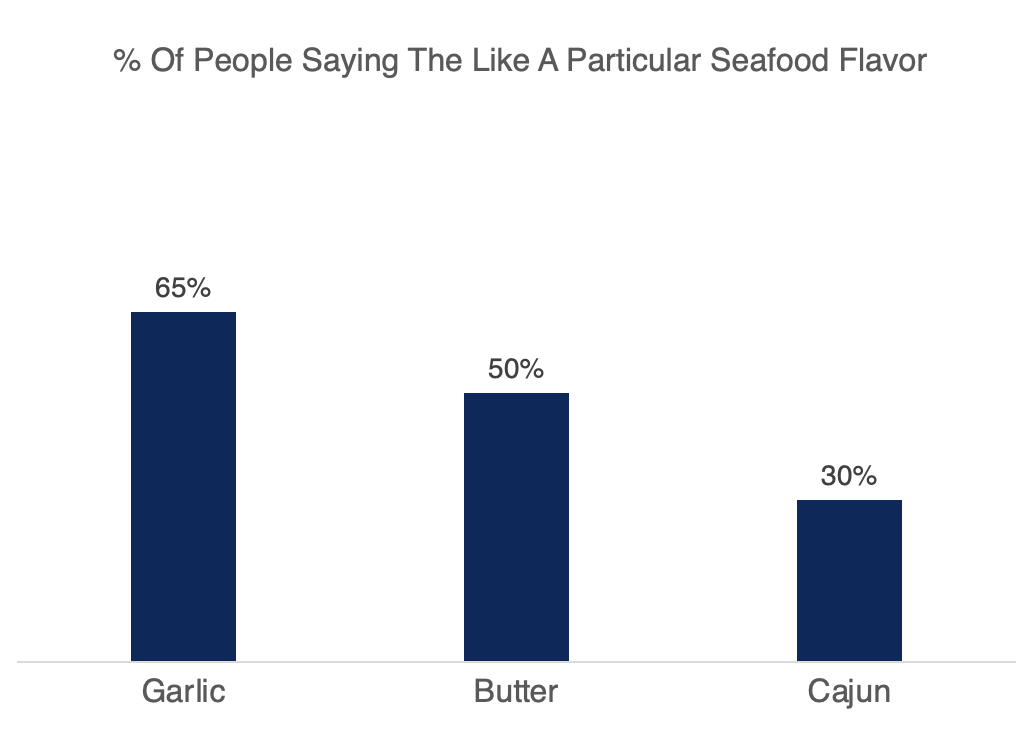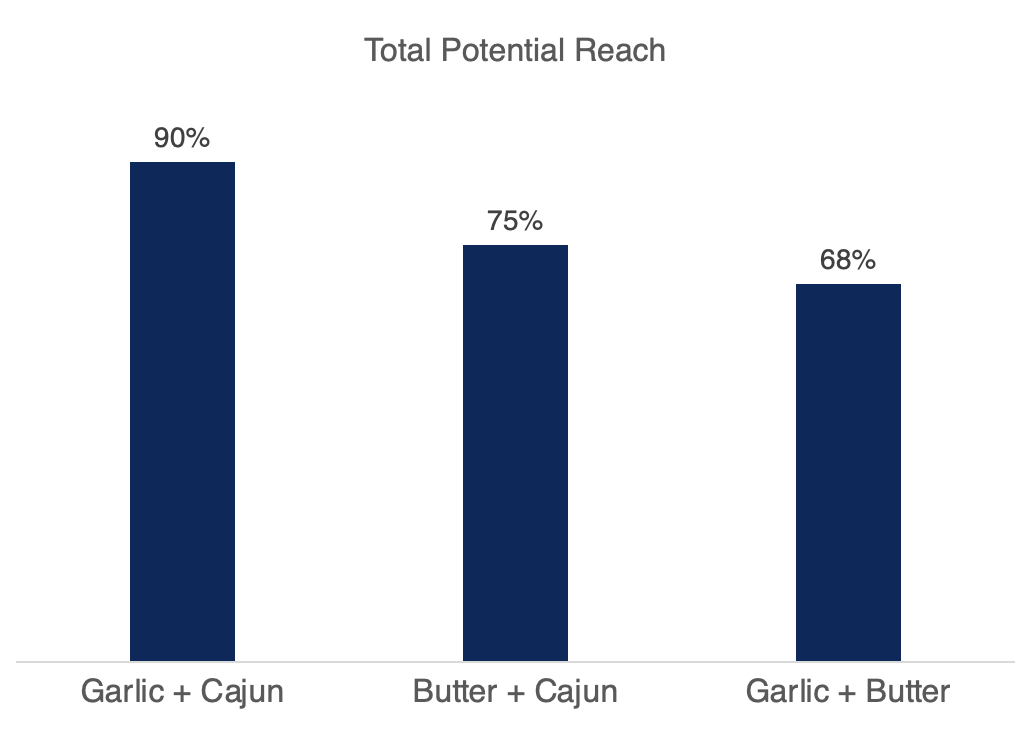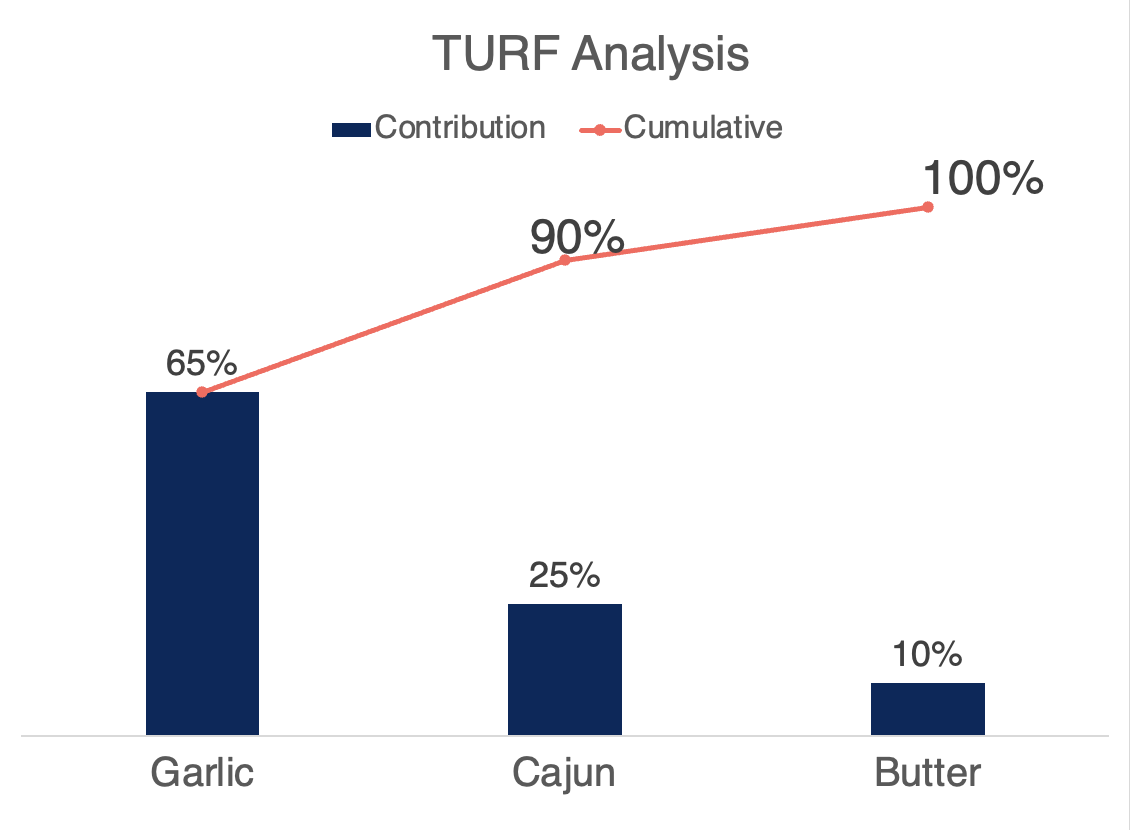All businesses work with finite resources. This means making trade-offs is a daily activity. In the world of marketing and product development, this translates to deciding which products get launched or which messages get made…and which ones get left behind.
How do you make sure you’re making the right trade offs? Through a time-tested method called TURF Analysis.
As a market research approach that lets you assess which mixing and matching of products or messages lets you reach the greatest number of customers, TURF gives you an objective way to make prioritization decisions.
What Is TURF Analysis
TURF stands for Total Unduplicated Reach And Frequency. It is a statistical method to identify the best mix of products or messages to appeal to the greatest number of people.
That full phrase sure is a mouthful. But, the keywords “unduplicated reach” really get to the heart of why TURF is so powerful. Let’s use an example to show why this is true.
Pretend you’re a seafood company about to launch a new product in supermarkets. You’ve narrowed down the list of flavors you might launch to three. However, you only have the funds to launch two. Which do you choose?
With TURF, you can identify which two flavors let you appeal to the greatest absolute number of customers (a.k.a. “unduplicated reach”). Said another way, you use it to optimize decisions to reach the most customers with the resources and budget you have.
How TURF Analysis Improves Upon Product Preference Questions
You might be thinking, “Can’t I just ask people which flavors they like and pick the top two?” Yes, you can. But, you’ll likely pick the wrong ones. Here’s why.
Asking about overall appeal of each flavor will let you understand how much each flavor is liked within a given population. Using our seafood example, we will definitely be able to see if “Garlic” is more or less preferred than “Butter” or “Cajun” by seafood consumers. In fact, we’ll bet you money that “Garlic” and “Butter” will outperform “Cajun.” However, because what we really care about is unduplicated reach, we should not immediately launch “Garlic” and “Butter.”
This is because “Garlic” and “Butter” are likely enjoyed the same amount by the exact same people. Meanwhile, “Cajun” is such a unique flavor that it likely appeals to a completely different set of customers. By running a TURF analysis, we see this distinction and identify which two flavors let us reach the greatest, unduplicated number of people.
Let’s see this play out via the graphs below. On the left we see a graph telling us how many people said they liked each flavor. Sure enough, “Garlic” and “Butter” come out on top. However, the chart on the right with the TURF analysis shows that “Garlic + Cajun” let us reach the greatest number of people. Cajun-flavor lovers are so different that you can reach more unique people by making Cajun one of the two selected flavors.


How To Optimize Unduplicated Reach
Let’s now look at how you can measure “unduplicated reach” to optimize trade-off decisions. We first start by asking people a very simple survey question. Using our seafood example, it would be something like, “Select which of the seafood flavors you would be favorite choice and second-favorite choice.”
Via a survey, respondents see a list of flavors. They then must select one option as their top two choices.
The output of this type of study looks like the chart to the right. We see that “Garlic” has 65% of the first-choice preference share. If we just launch one flavor, “Garlic” is the way to go. However, if we launch two flavors, we get 90% preference share with “Garlic” and “Cajun.” Sure, we can hit 100% by adding in “Butter.” But, the cumulative share growth is much smaller. Or, said more simply, we don’t reach many more people by launching “Butter.”
By graphing this out, we see the incremental reach that each additional flavor offers. With data in-hand, we know how to address the greatest unduplicated reach.

Interesting Ways To Get The Most Out Of TURF
Who you decide to survey is as important as the survey or research method itself. Consider some of the ways below to augment your TURF or your sample population to accommodate different business goals.
- Include Competitor Messaging Or Products: Customers do not make decisions in a vacuum. They are looking at you and competitors when making a decision. Including competitor features, messages, or products in your analysis lets you see how well you really stack up when customers make final purchase decisions.
- Include Loyal Buyers: If you’re focused on driving customer retention, consider recruiting brand-loyal customers into your survey population. Doing TURFs with this group lets you see how adding in new products or new messaging help retain key customers.
- Include Non Loyal Buyers: Conversely, if you’re looking to move people to your brand, recruit non-loyal customers or those loyal to competitors. With this sample population, you can identify what new features or messaging you need to attract these new customers.
This list above offers just some suggestions about methodology and sampling when doing TURFs. Make sure to come to the table with your business goals or questions mapped out first. With that in-hand, you can best adapt your TURF to make sure those key questions are answered.






